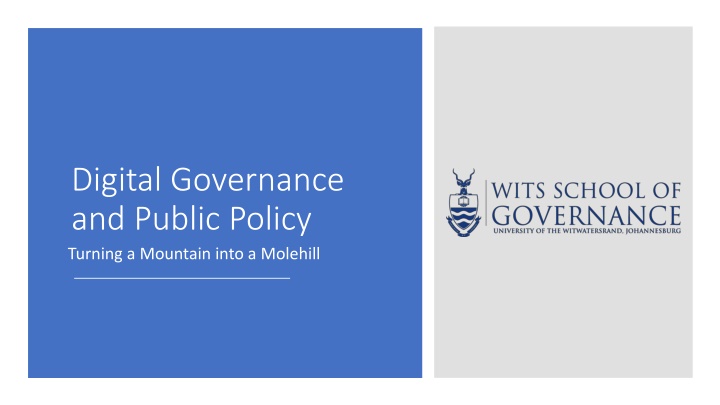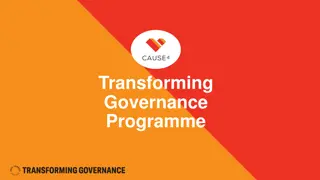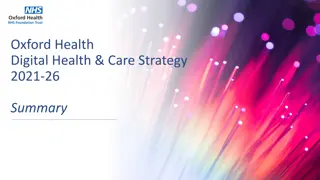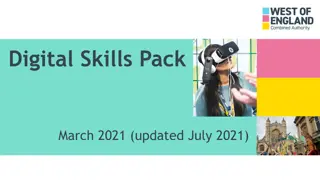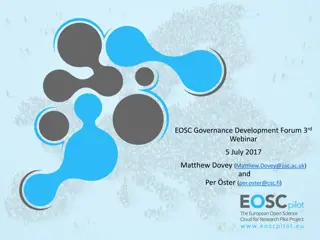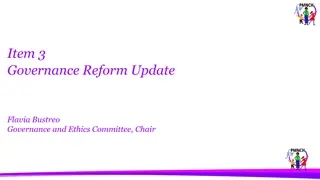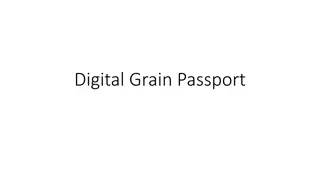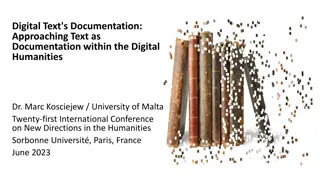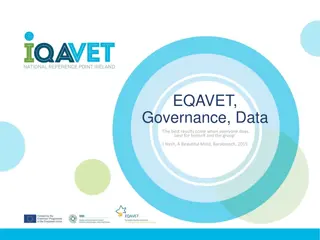Digital Governance
The content delves into the complexities of digital governance, exploring issues in public policy implementation. It highlights the importance of effective governance structures and mechanisms for managing societal affairs and mediating interests. The discussion covers various approaches to governance, including hierarchical, market-driven, and network-based models. Additionally, it addresses the components of New Public Management and the need for responsive, efficient, and outcome-focused governance in the digital age.
Download Presentation

Please find below an Image/Link to download the presentation.
The content on the website is provided AS IS for your information and personal use only. It may not be sold, licensed, or shared on other websites without obtaining consent from the author.If you encounter any issues during the download, it is possible that the publisher has removed the file from their server.
You are allowed to download the files provided on this website for personal or commercial use, subject to the condition that they are used lawfully. All files are the property of their respective owners.
The content on the website is provided AS IS for your information and personal use only. It may not be sold, licensed, or shared on other websites without obtaining consent from the author.
E N D
Presentation Transcript
Digital Governance and Public Policy Turning a Mountain into a Molehill
What do you do with this?
What do you do with this?
Failing at digital governance is not unique to the developing world
Governance refers to exercising political, economic and administrative authority in managing the nation s affairs and the complex mechanisms, processes, relationships and institutions through which citizens and groups communicate their interests, exercise their rights and obligations and mediate their differences, (United Nations Development Programme (UNDP). What is Governance?
Hierarchal, Market driven, Quasi-Market Driven, Networks Evolving Approaches to Governance
Components of New Public Management Privatization, deregulation, debureaucratization and decentralization A shift from inputs and processes to outputs and outcomes The use of performance indicators A preference for lean/flat organisations rather than large/hierarchical bureaucracies Wider use of market mechanisms for the delivery of public services Breaking away from New Public Management
Responsive Respond to dynamic transactional information Efficient Don t digitalise inefficiencies e.g. eNatis Fair Equality of outcomes not necessarily in process What is Needed from Governance that is digitalised?
What is Needed from Governance Co-Production Co-Creation that is digitalised?
The things you need to wrap your head around Perceptions Trust Political Commitment Diffusion of innovation Digital Divide Human Capital ICT Infrastructure Affluence Governance Simply Building it does not mean they will come
Reintegration reversing fragmentation, joining up, re-governmentalization, new central processes, squeezing process costs, shared services, simplification, in-sourcing Holism client-focused structures, end-to-end redesign and reengineering, one-stop processes, co-production, agile government Digital Era Governance Digitalization electronic service delivery, new automation, disintermediation, open book governance, agencies become their on-line presence
5 Dos and 4 Choices of Digital Governance
Do 1: Deliver Public Services For Free in the Digital World
D2. Use already existing digital information
D2. Use already existing digital information
D4. Grow scalable services in competition
D5. Isocratic (DIY) administration
C1. Value equality of outcome over process
C2. Provide formal rights and real redress
C3. Keep the state nodal obligation
C4. Experiential learning
Dunleavy, P., & Margetts, H. (2015). Design principles for essentially digital governance. 111th Annual Meeting of the American Political Science Association. http://community.apsanet.org/annualmeeti ng/home Dunleavy and Margetts
